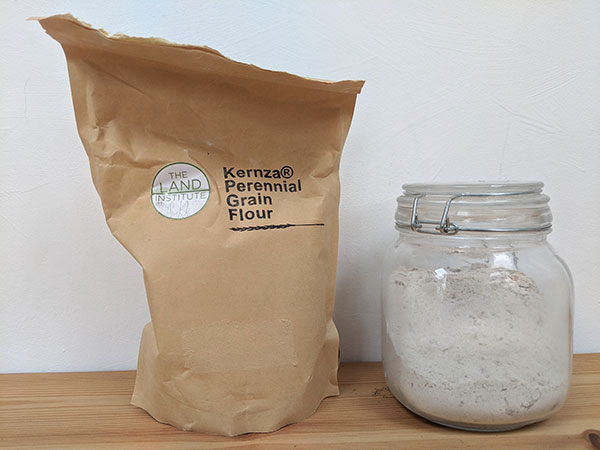The photo was printed on a long thin strip of paper, folded in three. It opened to reveal two plants side by side, dug from the soil with their roots intact, shot against a black background. Both were members of the grass family. I recognized the one on the left.
It was a modern, short-stemmed variety of wheat. The pale roots formed a thin goatee, a little longer than the plant was tall. The grass on the right was a species I hadn’t seen before. It was taller and bushier than the wheat. Its seedheads were long and thin.
But the most interesting feature lay below ground: a ginger beard of roots that ZZ Top would have worn with pride, woolly and matted, blotting out the background and twisting down to the bottom of the third fold. Using the wheat for scale, I reckoned it must have been over three metres long.
This was a specimen of intermediate wheatgrass. The name is slightly misleading, as it has no close relationship to wheat. It’s a wild plant, but the specimen in the photo had passed through several generations of selective breeding by a non-profit group called the Land Institute, which had sent me the box from its base in Salina, Kansas.
Because intermediate wheatgrass is unlikely to lodge in the mind, the institute had given the plant a new name: Kernza. Four of the five bags contained flour made from its seeds.
There’s nothing inherently amazing about flour made from grass seeds. After all, most of the grains we eat come from this family: wheat, rice, maize, oats, sorghum, millet, rye and barley are all grass.
Several businesses have brought new (or old) grass seeds onto the market, such as the heritage wheats that John Letts and others have revived, or spelt and einkorn. But what enthuses me about this flour is that it comes from a grass which differs fundamentally from all those mentioned in this paragraph. While those crops are annuals, which means that they must be replanted every year, Kernza is a perennial.
It persists over several years, averting the need to clear and sow the ground for every harvest. Of all the possible agricultural technologies and techniques I’ve explored while researching this book, I find this the most exciting.
The problem is that in cultivating annuals, we must keep the land in the catastrophic state they prefer. Every year, we must clear the soil of competing plants, puncture or turn it, and plaster it with the nutrients required to raise a crop from seed to maturity in a few months.
However sensitively it is conducted, annual grain production relies on sustaining an ecological disaster for its success. But if instead we grew perennial grain crops, we would not depend on smashing living systems apart to produce our food.
For the past forty years, the Land Institute has been scouring the world for perennial species that could replace the annuals we grow. With other research groups, it has assessed thousands, looking for particular features: high yield, synchronous development (so all the grain can be harvested at the same time), seed retention (which means that the grain stays on the plant until it’s harvested), and ease of growing and reaping (especially by small farmers).
Though Kernza – intermediate wheatgrass – is still being developed, it’s one of the first crops that the Institute has tentatively brought to market. So far, the plants have been bred to carry as many seeds as wheat does, but each one is only a quarter of the weight. The breeders hope to match wheat yields within thirty years.
Regenesis by George Monbiot (£17.99, Penguin Books) is out now.












All very interesting but is Kernza grain or flour actually available in the UK? All the content on kernza.org is entirely USA centric…